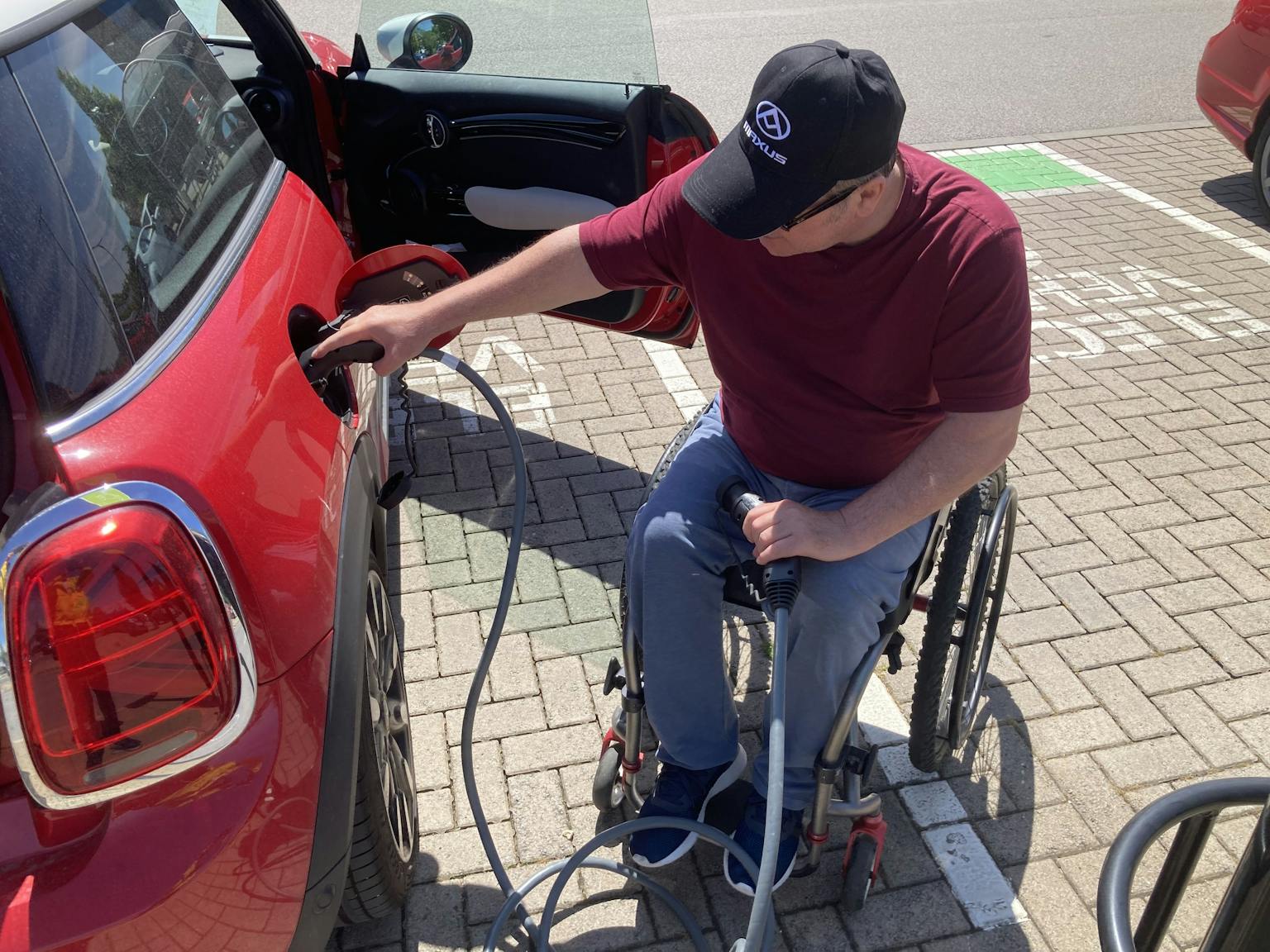October 2022
|Last updated:April 2024
Accessibility in EV Charging: Roger Warner
How accessible are EV charging stations for people with disabilities? From high kerbs, heavy cables and difficult-to-reach interface screens, most charging locations are inaccessible to the hundreds of thousands of disabled drivers who will be making the switch to EVs in the coming years.
In order to understand more, the Electroverse team sat down with Roger Warner, a disabled EV driver and advocate, to learn about his personal and professional experience using UK charge points; and hear what the charging providers should be doing.
Let's get plugged in...
Tell us a bit about yourself - where are you based, what’s your career history, and what are you currently working on?
I began my career in an Advertising Agency graphic design studio. I progressed into magazine publishing and management, and in 1984 I joined a newspaper publishing PLC. In 1994 I went to work for a newspaper, PLC, in Asia. In 1996 still in Asia, I launched my own Internet marketing and website development business. I sold this in 2003. I opened a couple of restaurants and did some property development. In 2006, in Asia, I started another integrated marketing and web development business, specifically so I could employ disabled students from a local vocational college, some of whom were in wheelchairs. I retired from this business in 2017, returned to the UK and now live in a small village in Lincolnshire. I currently consult on accessible holidays and accessible EV charging.
How did your EV journey begin, and what do you love about EV driving?
It was October 2021, and I sold my 5.0 V8 Mercedes CLS. I had planned to buy a Mini Countryman PHEV. While at the Mini showroom, I saw a Mini Electric plugged in on charge. I’ve had Minis in the past and always liked them - I said to the salesman, ‘it’s a shame that I wouldn’t be able to fit all my wheelchair and bits and pieces into the car’. He said, ‘do you want to try it?’ So we did, and we could easily pack my electric wheelchair into the back of the Mini with one of the rear seats folded down. He then proceeded to take us for a test drive, at which point I decided that was the car I wanted. What I enjoy about the Mini SE is the effortless power and the quiet, smooth serenity that comes with driving an electric vehicle, plus the economy is also very good.
How would you describe your disability, and how does it impact your driving experience?
In 1973, at age 15, I broke my neck playing rugby — a C5 – C6 injury that left me as an incomplete quadriplegic. After a couple of years in a wheelchair, I was eventually able to walk with walking sticks. However, for the last 10 years, I have needed to rely on a wheelchair more and more. I was always able to drive an automatic vehicle and got my first vehicle with Hand Controls in 2018.
When you first started driving an EV, what accessibility problems did you encounter on the public charging infrastructure - are they still there today?
As soon as I got my EV, I discovered on my first visit to a public EV charger that I had possibly made a big mistake. I was unable to use the equipment on my own and needed assistance from my wife to fully charge the car. Since then, I have found it very difficult to find public EV charges with wide enough parking bays, level hard surfaces, and accessible charge units. There are a few, but they are still very rare. Indeed, I’d say 1 in 20, perhaps? I have been campaigning to raise awareness of this problem via my YouTube channel, website, and Facebook.
Some companies are listening, but it’s still a huge problem that hundreds of thousands of disabled drivers will have to tackle in the next few years as they transition to EVs, unless something dramatic to resolve this situation and improve the charging infrastructure is done.
As it currently stands, how do you know that you’ll be able to access a charging station before driving up?
There are a few accessible chargers that I am now aware of, and where possible, I use them. But as soon as I venture further afield; then I need to do some significant research to confidently turn up at a public EV charger, knowing that I’ll be able to use it. As it stands, I still wouldn’t dare to drive long-distance solo.
What’s something that you are currently doing, that the charging networks should be doing?
I’m auditing the network and appraising the experience, then informing as many interested people as I can. Empathy alone will not suffice; actions need to be taken. I have set up Charge to Access, an organisation whose purpose will be to shine a light on the situation, praise and publicise good actors, and highlight and shame bad actors. And where required, to apply pressure and even take legal action. I have a PR company in place, and I’m currently trying to raise funding to set up an executive office.
What should charging operators prioritise when building new (and modifying old) charging stations?
It’s really quite simple. Every charging bay should be accessible to all. We already have a law, the Equalities Act 2010, that puts an obligation on local authorities, businesses and service providers to offer equal access to all public services. Currently, this isn’t happening with the EV charge industry. Later this year, the new BSI standards will be published, and they need to be forced to apply these standards and regulations exactly.
How can EV drivers help raise awareness about the accessibility of charging stations they have used?
We have a Facebook group, Charge to Access - Campaign for Access to the UK’s Public EV Charge Network, where we invite members to post pictures and stories of good and bad accessible charge experiences.
What’s one piece of advice you would give to a new disabled driver?
Don’t be swayed into an EV because of net zero, global warming, or other guilt-trip environmental issues. You really should put your own needs first. For example, the choice of EV vehicles at the moment is limited, and you may not be able to find a suitable EV vehicle for your requirements. If, on the other hand, you can find an EV that fits your specific needs, go for the longest-range vehicle you can afford, and then you really should make sure you’re able to charge it at home, don’t just rely on the public charge network
Feeling enlightened, or do you think something was missing? Let us know by sharing your feedback.
Interested in learning more? Head over to our Electroverse Community area for more electrifying content.







